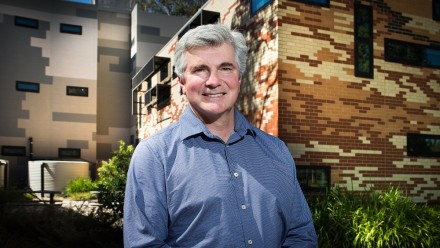Professor Geoff Cary

Contacts
Research
Geoff’s research interests include: landscape-scale simulation of fire management & climate change effects on fire regimes; fire ecology from genes to communities; house loss in wildland fire; and laboratory experimentation of fire behaviour. He co-led an international group of landscape-scale wildland fire simulation modellers.
Geoff gave a keynote address, on fuel management & house loss, at the Wildland Fire Canada Conference (Kananaskis, 2012). He was an invited speaker at the 10th World Wilderness Congress (Spain, 2013), the International Association of Landscape Ecology World Congress (USA, 2015), Banff International Research Station fire management workshop (Canada, 2017), an International Workshop of Fire Ecology (China, 2019), and the US National Academies of Sciences, Engineering, and Medicine workshop on greenhouse gas emissions from wildland fires (2023).
Media engagement includes Voice of America and ABC Radio National ‘The World Today’.
See Google Scholar publication list, and research project history from ANU Researcher Portal website.
Teaching
Geoff teaches bushfire dynamics and management in ANU courses, including • Fire in the Environment, with contributions to: • Island Sustainable Development; • Climate and its Applications; • Climate Change Vulnerability & Adaptation; • Environmental Policy; • Contemporary Perspectives in Environment-Society Interaction; • Environment and Society: Geography of Sustainability; • Fundamentals of Environment and Sustainability; and • Vietnam Field School (2025).
Graduate and Honours research supervision
Geoff has supervised/co-supervised 23 Higher Degree Research scholars (18 completed and 3 current PhD; 2 completed MPhil or equivalent), and 18 Honours scholars, largely in bushfire related topics. Honours and PhD scholars supervised have published ~30 journal articles from their thesis research.
Service
Geoff is Associate Director (Research) in the Fenner School and was Associate Director (Higher Degree Research). He is on the Editorial Advisory Committee, and was Associate Editor (2002-2023), for the International Journal of Wildland Fire. He sits on the Fenner School Executive Committee and College of Systems and Society research committee, and served on the the CoS Research Committee, CoS Reconciliation Action Plan Committee, FSES Local Area Consultative Committee, ANU WHS Fieldwork Advisory Group, ANU Statistical Consulting Unit Advisory Committee, and NSW Parks & Wildlife Advisory Council. He mentored in the ANU NECTAR early-career program.
Research interests
- Environmental Management
- Conservation And Biodiversity
- Forestry Fire Management
- Terrestrial Ecology
- Landscape Ecology
- Environmental Science And Management
Groups
- Researcher, Earth systems
- Researcher, Biodiversity
- Researcher, Extreme events and future scenarios







